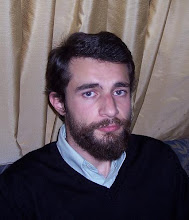Selection of identical responses may not use the same neural mechanisms when the number of alternatives (NA) for the selection changes, as suggested by Hick's law. For elucidating the choice mechanisms, frontal eye field (FEF) neurons were monitored during a color-to-location choice saccade task as the number of potential targets was varied. Visual responses to alternative targets decreased as NA increased, whereas perisaccade activities increased with NA. These modulations of FEF activities seem closely related to the choice process because the activity enhancements coincided with the timing of target selection, and the neural modulation was greater as NA increased, features expected of neural correlates for a choice process from the perspective of Hick's law. Our current observations suggest two novel notions of FEF neuronal behavior that have not been reported previously: (1) cells called "phasic visual" that do not discharge in the perisaccade interval in a delayed-saccade paradigm show such activity in a choice response task at the time of the saccade; and (2) the activity in FEF visuomotor cells display an inverse relationship between perisaccadic activity and the time of saccade triggering with higher levels of activity leading to longer saccade reaction times. These findings support the area's involvement in sensory-motor translation for target selection through coactivation and competitive interaction of neural populations that code for alternative action sets.
Neural activity in the frontal eye fields modulated by the number of alternatives in target choice.
Lee KM, Keller EL.
J Neurosci. 2008 Feb 27;28(9):2242-51.
Sunday, March 2, 2008
The cerebellum predicts the timing of perceptual events
Prospective (forward) temporal-spatial models are essential for both action and perception, but the literature on perceptual prediction has primarily been limited to the spatial domain. In this study we asked how the neural systems of perceptual prediction change, when change-over-time must be modeled. We used a naturalistic paradigm in which observers had to extrapolate the trajectory of an occluded moving object to make perceptual judgments based on the spatial (direction) or temporal-spatial (velocity) characteristics of object motion. Using functional magnetic resonance imaging we found that a region in posterior cerebellum (lobule VII crus 1) was engaged specifically when a temporal-spatial model was required (velocity judgment task), suggesting that circuitry involved in motor forward-modeling may also be engaged in perceptual prediction when a model of change-over-time is required. This cerebellar region appears to supply a temporal signal to cortical networks involved in spatial orienting: a frontal-parietal network associated with attentional orienting was engaged in both (spatial and temporal-spatial) tasks, but functional connectivity between these regions and the posterior cerebellum was enhanced in the temporal-spatial prediction task. In addition to the oculomotor spatial orienting network, regions involved in hand movements (aIP and PMv) were recruited in the temporal-spatial task, suggesting that the nature of perceptual prediction may bias the recruitment of sensory-motor networks in orienting. Finally, in temporal-spatial prediction, functional connectivity was enhanced between the cerebellum and the putamen, a structure which has been proposed to supply the brain's metric of time, in the temporal-spatial prediction task.
The cerebellum predicts the timing of perceptual events.
O'Reilly JX, Mesulam MM, Nobre AC.
J Neurosci. 2008 Feb 27;28(9):2252-60.
http://www.ncbi.nlm.nih.gov/pubmed/18305258?dopt=Abstract
The cerebellum predicts the timing of perceptual events.
O'Reilly JX, Mesulam MM, Nobre AC.
J Neurosci. 2008 Feb 27;28(9):2252-60.
http://www.ncbi.nlm.nih.gov/pubmed/18305258?dopt=Abstract
Subscribe to:
Comments (Atom)
